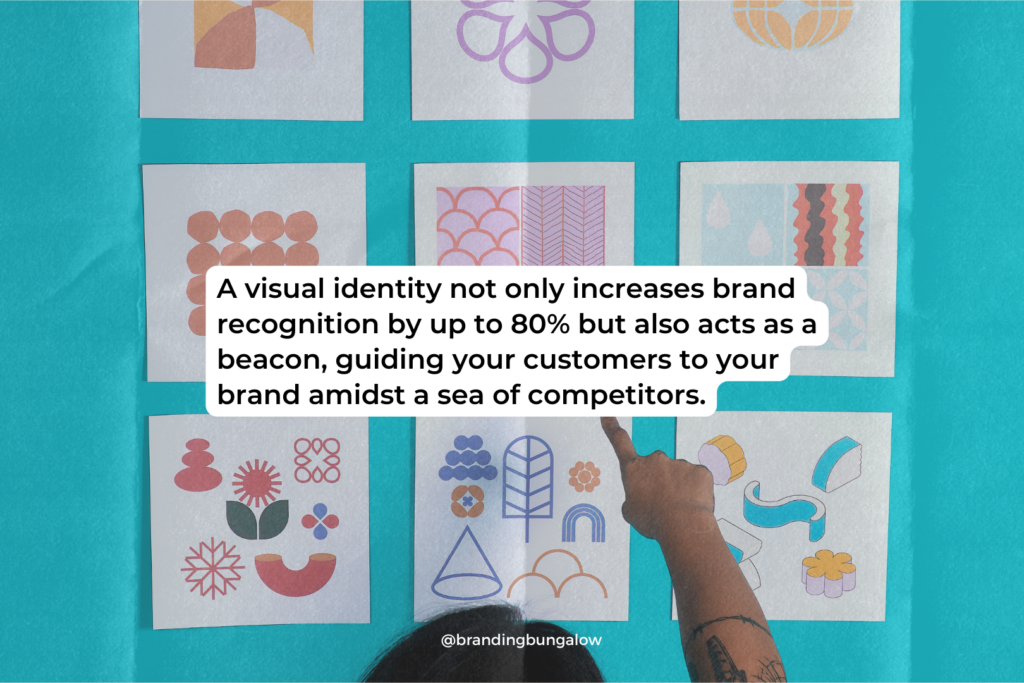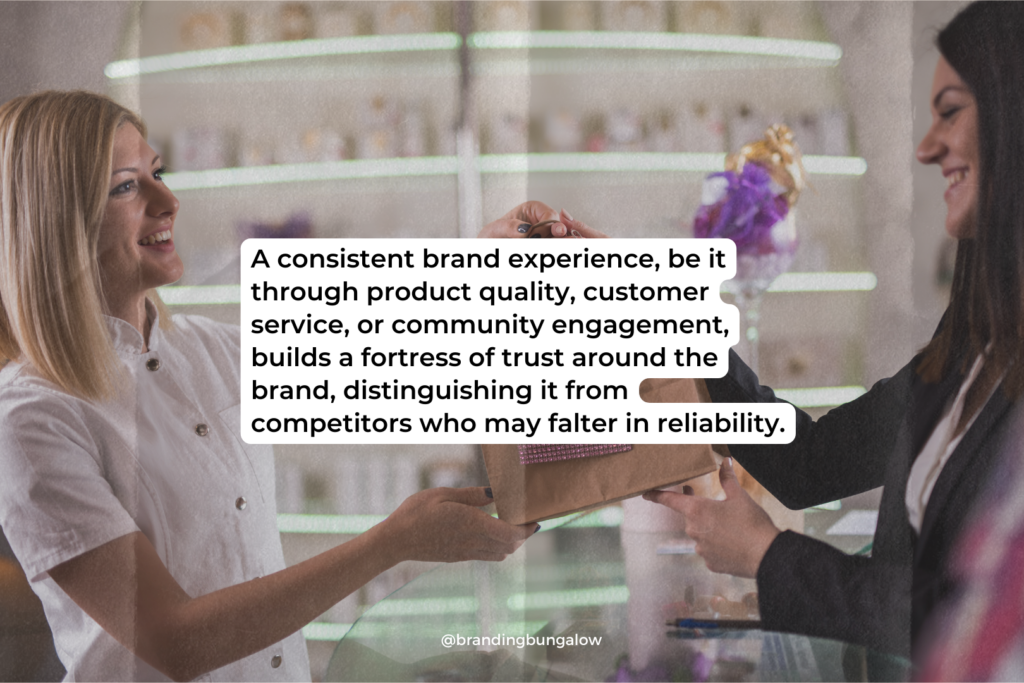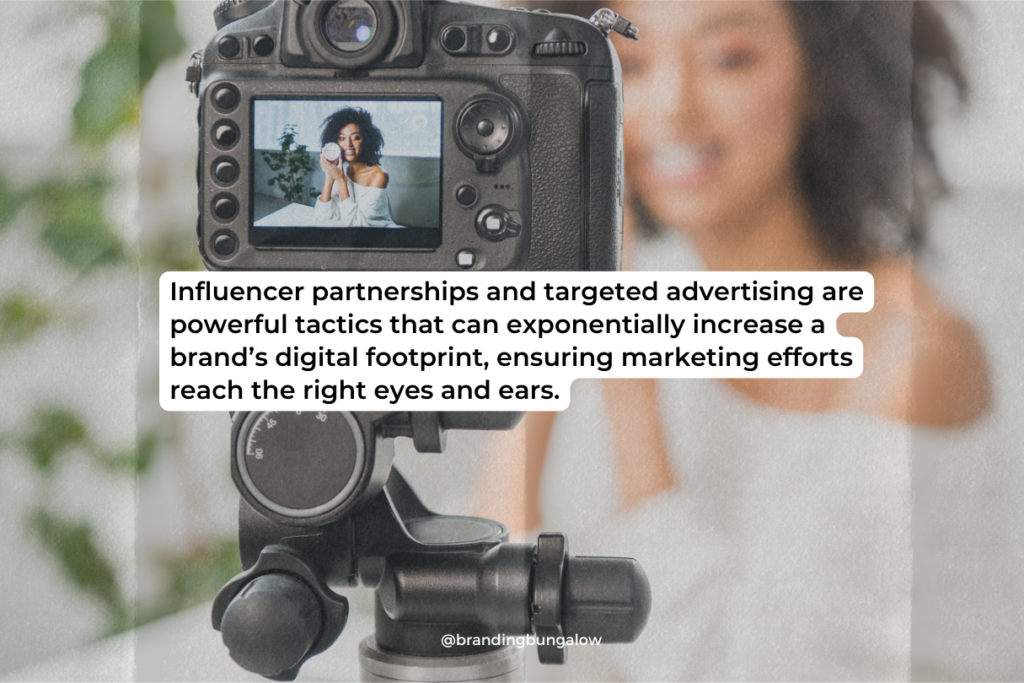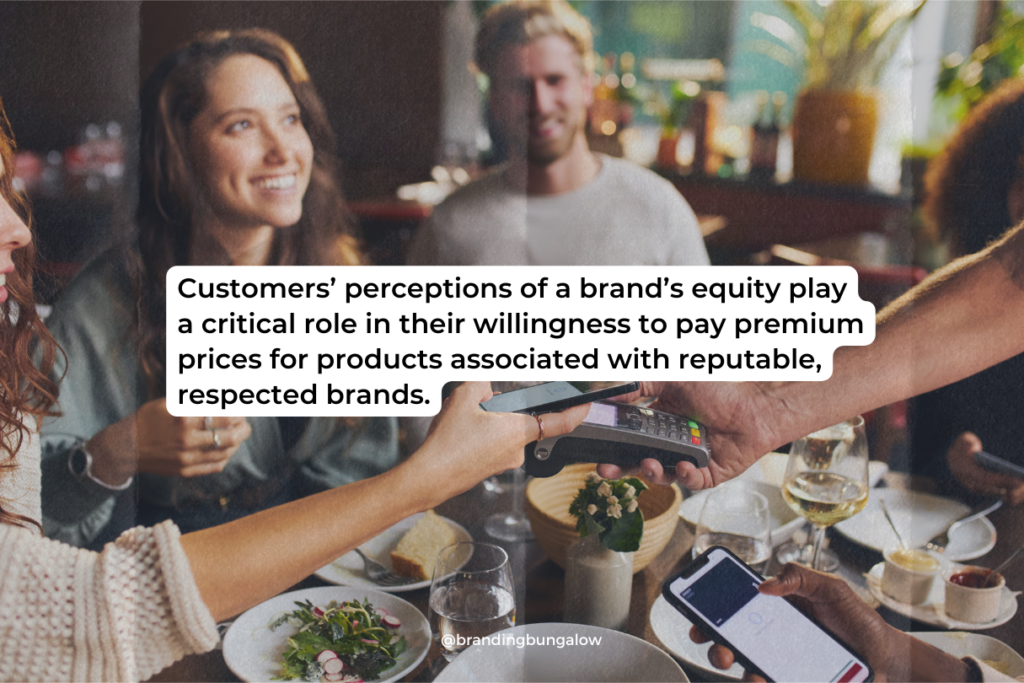Maximizing Success: Exploring the Benefits of Business Branding
What sets successful businesses apart in a crowded market? Often, it’s their branding. The strategic benefits of business branding can transform consumer perception, loyalty, and a company’s bottom line. If you’re looking to justify the investment in your brand or understand its power, this article will explore the crucial role branding plays in awareness, loyalty, differentiation, and profitability—essential components to outshine your competition and cement your place in the marketplace.
Key Takeaways
- Strong branding elevates brand awareness and loyalty, creating a familiar and trustworthy identity that resonates with consumers, much like giants Apple and Nike have achieved.
- Consistent visual identity and strategic branding across various platforms are instrumental in cultivating customer loyalty and distinguishing a brand in the saturated marketplace.
- Investing in employer branding attracts top talent and enhances company culture, fostering employee alignment with the brand’s values and promises for long-term success.
Elevating Brand Awareness

Imagine entering a room where everyone recognizes you, greets you by name, and knows your story. That’s the pinnacle of brand awareness—a stage where your business brand becomes a familiar face, a trusted entity in the bustling marketplace. The journey to elevating brand awareness is a strategic one. It involves a blend of consistent promotions, inventive advertising, and a robust social media presence.
With increased brand awareness comes the ability to shape consumer perceptions. Doing so signals to your target audience that your brand is not just present but prevalent. Consider the giants like Apple and Nike, whose names alone evoke vivid imagery and emotions. Their success in brand awareness is a testament to the strength of a well-established brand.
Establishing Visual Identity
A brand without a visual identity is like a novel without a cover. It lacks the allure to draw interest or remain memorable. It’s the color palette that paints your brand’s story, the typography that writes its character, and the logo that seals its essence. A visual identity not only increases brand recognition by up to 80% but also acts as a beacon, guiding your customers to your brand amidst a sea of competitors.
It’s about translating the brand’s personality and core values into visual elements that resonate with the audience at a glance. Consistent branding, reinforced by guidelines, ensures that all visual and narrative elements align, presenting a cohesive and compelling brand story.
Making Your Mark with Logos and Taglines
Logos and taglines are the signatures of your brand’s identity, the elements that linger in the mind’s eye and on the tip of the tongue. They are the keystones of brand recall, enabling your business to be recognized without the crutch of a visual cue. A powerful logo and a catchy tagline can ensure your brand remains top-of-mind. Doing so drives recognition and preference in the decision-making process.
The goal is to carve a niche in the consumer’s mind. That way, when they think of a product or service, it’s your brand that surfaces first, unfettered by competition.
Cultivating Customer Loyalty

Beyond the initial allure and recognition, the true strength of a brand lies in its ability to foster enduring relationships with its customers. It’s about converting first-time buyers into lifelong patrons and casual browsers into loyal customers. This is the essence of customer loyalty, a bond that transcends transactions to become a harmonious relationship between the brand and its followers. When customers feel an emotional connection with a brand, loyalty blossoms, leading to preferences that can fuel sustainable business growth.
Such connections are not born out of happenstance but are carefully cultivated through understanding and consistently meeting customer needs. Brands like Apple have mastered this strategy to create a dedicated customer base.
Beyond Transactions: Building Relationships
Customer loyalty isn’t just about repeat purchases; it’s the culmination of personalized experiences and the nurturing of an emotional connection. Brands that invest in personalization demonstrate to their customers that they are seen, heard, and valued. It’s this unique customer experience that sets a brand apart in a crowded market. These experiences transform satisfied customers into passionate brand advocates ready to share their positive experiences with the world.
Social media plays a pivotal role here. It offers a platform for meaningful engagement that can deepen loyalty and trust over time.
The Role of Brand Promise in Retention
The cornerstone of customer retention lies in a brand’s promise—a commitment to consistently deliver on the expectations set forth. It’s a brand’s assurance to its customers that the values, quality, and experiences they cherish will be met with unwavering dedication at every encounter. A consistent brand experience, be it through product quality, customer service, or community engagement, builds a fortress of trust around the brand, distinguishing it from competitors who may falter in reliability.
This consistency is not just a part of the branding process. It’s a strategic approach to forming lasting relationships with customers by ensuring that the brand’s voice and values are echoed at every touchpoint.
Crafting a Unique Brand Identity

In the symphony of the market, each brand must play its unique melody to captivate the audience. Crafting a unique brand identity is about orchestrating a brand’s core values, personality, and story to resonate with both business goals and audience expectations. It’s about establishing an indelible voice in a cacophony of competitors, one that sings the praises of the brand’s mission and vision, aligned with the company’s culture and value proposition.
This strategic curation of a strong brand identity is the linchpin of brand management. It ensures that the company’s communications are not only consistent but also compellingly distinct.
Defining Your Brand’s Core Values
The soul of your brand lies in its core values. It is those unwavering principles that guide every decision, every action, and every message. These values are the magnetic north for your company’s narrative and decision-making. They attract customers who share similar beliefs and fostering a community around your brand. By clearly articulating these core values, a brand not only stands out but also enhances its overall experiences. Thus, it build loyalty and operational efficiencies that ripple through every facet of the business.
Reflecting on employee perceptions and customer relationships can unveil the authentic core values. These then become the bedrock of persuasive storytelling and impactful brand experiences.
Aligning Identity with Audience Expectations
A brand that echoes the heartbeat of its audience is one that thrives. Aligning your brand identity with the desires and expectations of your audience ensures your message resonates and remains relevant in an ever-changing market. Mood boards and style guides are not just artistic tools. They are instrumental in crystallizing the emotions and perceptions you want associated with your brand. These tools shape effective branding that speaks directly to the hearts of your target market.
Consistent branding across all platforms and touchpoints unifies the image and message presented to customers. It reinforces recognition and fosters an unbreakable bond with the audience. As businesses and societal contexts evolve, so must the brand. They require regular evaluation to maintain alignment with audience expectations and to continue captivating the market.
Enhancing Competitive Differentiation
In the world of business, standing out is not just desirable—it’s essential. Enhancing competitive differentiation is the strategic art of positioning your brand in a way that not only distinguishes it from the competitors but also elevates its perceived value. It’s about understanding the competitive landscape to pinpoint the unique advantages of your products and services, thereby crafting an effective brand strategy that positions your business as a leader in the industry.
Originality is key. It’s the original thought, the unique promise, and the authentic experience that keeps a brand from becoming just another voice in the crowd. Thus, the brand can command a premium position in the market.
Carving Out a Niche in a Saturated Market
In markets teeming with options, finding a niche can be like finding a haven in a storm. It’s about identifying those consumer segments that feel overlooked and crafting tailored solutions that speak directly to their needs. Companies that have pivoted to serve nontraditional consumers have found success by fulfilling unmet needs and desires, thereby securing a stronghold in their respective industries.
The aim is to:
- Simplify and enhance the consumer experience
- Differentiate your brand as one that understands its customers and delivers unmatched value and convenience
- Focus on offering the best return on investment for consumers
This can propel a company to the forefront of a saturated market. It thus empowers it to emerge as a leader and contribute to the company’s success.
The Power of Brand Positioning
The strategic positioning of your brand is the lever that can lift its market standing to new heights. Brand positioning is a powerful tool that defines how a brand is perceived in the marketplace. It influences not just consumer choice but also the ability to command premium prices. With a strong positioning strategy, a brand can craft a perception of quality and exclusivity that resonates with consumers. Therefore, it compels them to see the brand’s offerings as superior to those of competitors.
This enhanced brand equity is not just a marker of differentiation. It’s a driving force behind financial growth and market dominance.
Amplifying Marketing Efforts

In the digital age, branding and marketing are two sides of the same coin. Each amplifies the power of the other. When leveraged effectively, brand assets and values can significantly enhance the reach and performance of marketing campaigns. This ensures a greater return on investment. A strong brand captures the imagination of the customer, heightening their receptivity to new products and promotions, and creating a fertile ground for the seeds of marketing to flourish.
Furthermore, effective branding attracts influencers and content creators. These social media gurus serve as catalysts to broaden the brand’s digital presence and amplify its message across the vast digital landscape.
Synergy Between Branding and Marketing Materials
Consistency is the thread that weaves together the tapestry of a brand’s marketing materials. When a brand’s mission, vision, and identity are echoed across all platforms, it not only builds customer trust but also streamlines the development of marketing materials. With a clearly defined brand strategy, every piece of marketing—from billboards to tweets—is infused with the brand’s promise, enhancing customer experiences and reinforcing the brand’s credibility.
Consistent branding across all formats ensures that the brand’s message reverberates with clarity and impact, amplified by the power of consumer sharing. By maintaining this synergy, a brand can reinforce its presence in the market. This creates a unified and potent voice that is hard to ignore.
Leveraging Social Media Posts for Greater Reach
In the realm of social media, content is king, but engagement is the kingdom. Engaging content on platforms such as Instagram, TikTok, and YouTube can magnify a brand’s identity, drawing in audiences with its authenticity and resonance. Brands can extend their reach by fostering deep emotional connections through interactive social media posts. These connections encourage user-generated content that drives word-of-mouth marketing.
Influencer partnerships and targeted advertising are powerful tactics that can exponentially increase a brand’s digital footprint. They ensure marketing efforts reach the right eyes and ears. The key lies in the brand’s ability to consistently reflect its visual identity and messaging, transforming social media from a platform for promotion to a canvas for connection.
Achieving Premium Pricing with Perceived Value
The allure of a strong brand can transcend the mere functionalities of a product. It elevates the brand to a realm where perceived value dictates pricing power. Premium pricing is the art of setting prices higher than the competition, not out of arrogance, but out of confidence in the brand’s added value. This value is often intangible, woven from the threads of brand equity, reputation, and the emotional connections customers have with the brand.
By leveraging these intangible benefits, companies can attract customers who are willing to pay more for the promise and experience a strong brand delivers.
The Psychology Behind Pricing and Brand Perception

The interplay between pricing and brand perception is a fascinating dance that can sway purchasing decisions. Customers’ perceptions of a brand’s equity play a critical role in their willingness to pay premium prices for products associated with reputable, respected brands. Premium pricing strategies not only enhance the image of higher quality and exclusivity but also imbue the brand with an aura of desirability that customers find irresistible.
The psychological effect of a respected brand name can often eclipse the product’s objective value. It can turn brand equity into a financial asset of considerable worth.
Case Studies: Brands That Command Premium Prices
The proof of branding’s ability to command premium prices is evident in the case studies of titans like Apple and Rolex. These brands have mastered the art of premiumization, where exclusivity and high-class stature justify their higher pricing strategies.
Apple’s enviable brand equity allows it to maintain a devoted customer base willing to pay premium prices for its latest innovations. Rolex’s strategy of limiting distribution and manufacturing only a select number of each watch model has established its exclusivity. This makes its products highly desirable and allowing the brand to command premium prices.
Attracting and Retaining Top Talent
A company’s brand is not only its face to customers but also its invitation to future employees. A robust employer brand is a magnet for quality talent. Up to 72% of recruitment leaders affirming that a strong employer brand significantly impacts hiring success. Investing in employer branding has become a strategic priority, with nearly 59% of leaders increasing this investment to ensure their company stands out as a desirable place to work.
In today’s competitive job market, strong brands with a strong brand reputation can be the deciding factor for a candidate choosing between offers. 76% of job seekers prefer companies with a favorable reputation.
Creating a Positive Work Environment Through Brand Culture

The ethos of a brand extends into the very fabric of its culture, creating an environment where employees can thrive. A well-defined brand culture not only fosters operational clarity and efficiency but also instills a sense of belonging and pride among the workforce. When employees are aligned with the brand’s values and promises, they are more likely to:
- feel satisfied and motivated
- have a sense of purpose
- be more engaged in their work
- be more productive
- have a positive attitude
- contribute to a positive work environment
Maintaining a positive work environment is crucial for the success of any organization.
Positive reviews on employment platforms such as Glassdoor are a testament to a company’s healthy brand culture, which in turn attracts top talent looking for a fulfilling workplace.
Employer Branding: A Tool for Recruitment
Employer branding is the strategic portrayal of a company as an exceptional place to work, a narrative that is as important as the products or services the company offers. Strong employer branding not only distinguishes a company in the job market but also resonates with potential employees, attracting those who are not just looking for a job but a career with a reputable and trustworthy partner.
Engaged employees are the lifeblood of a company, contributing to increased productivity and profitability, which is why an engaging employer brand is critical for attracting and retaining the best talent for long-term success.
Increasing Business Valuation
Branding is more than just a marketing tool; it’s a financial lever that can significantly increase a business’s valuation. Brand valuation is rooted in consumer perception, recognition, and trust, all of which play a pivotal role in enhancing the overall worth of a business. Intangible assets like brand equity are often the hidden gems that add substantial value to a company’s balance sheet, sometimes even exceeding the value of tangible assets.
As companies recognize the strategic importance of branding in their financial planning, they align marketing and finance to bolster their brand and, by extension, their business valuation.
Brand Equity as an Intangible Asset
Brand equity is an intangible treasure trove that significantly contributes to a company’s overall market value. According to accounting standards, intangible assets like a brand are expected to yield future economic benefits, reflecting their importance in financial terms.
While internally developed brand assets like logos and brand values may not be quantifiable on a balance sheet, their role in brand recognition and customer loyalty is invaluable, cementing their status as crucial contributors to a company’s worth.
The Influence of Brand Recognition on Market Share
Brand recognition is a powerful driver of market share, influencing customer decisions and solidifying a brand’s position in the market. When consumers are faced with the choice between a well-known brand and a lesser-known one, the strength of the brand often tips the scales, leading to increased market share and profitability.
Recognizable brands enjoy the loyalty of their customers, which enhances the impact of their advertising campaigns and helps to capture a larger portion of the market. By increasing consumer engagement and improving their overall experience, brands can use recognition as a strategic advantage to:
- Grow their market share
- Increase customer loyalty
- Drive repeat purchases
- Attract new customers
Facilitating New Product Launches
Launching a new product is a venture fraught with risk, but brands with well-established reputations can use their existing customer trust as a springboard for success. When a brand is already associated with quality and reliability, new products are more likely to be welcomed by potential customers, reducing the risk associated with product launches and accelerating adoption rates.
This trust, built over time through a consistent track record of delivering on brand promises, can be a game-changer for companies looking to innovate and expand their product lines, making them a reliable and trustworthy partner.
Leverage Existing Customer Trust
The trust that customers place in a brand is a powerful tool that can be leveraged to ensure the success of new product introductions. Apple’s AirPods are a prime example, achieving over 50 percent of the global market share shortly after launch, largely due to the trust and loyalty Apple had already established with its customer base.
This existing brand loyalty reduces market entry risks and can even guarantee market dominance for new offerings, as seen with the rapid adoption of AirPods by devoted Apple users.
Co-Branding Partnerships for Expansion
Co-branding partnerships are a strategic maneuver that allows businesses to combine their strengths to create unique and compelling offerings. When two brands come together, they can capitalize on each other’s reputation and customer base, reaching new audiences and adding additional value for their customers.
These collaborations can be particularly effective for:
- Expanding into new markets or segments
- Allowing both brands to explore new possibilities
- Driving innovation
- Sharing the risks and rewards
Summary
Navigating the landscape of branding is akin to charting a course through the cosmos—both vast and intricate in its possibilities. From the luminous glow of brand awareness to the gravitational pull of customer loyalty, the journey through establishing a unique brand identity, carving a niche, and commanding premium prices is one of strategic finesse. A strong brand not only amplifies marketing efforts but also attracts top talent and increases business valuation, laying the groundwork for successful new product launches and sustained growth. Let the power of branding be the north star that guides your business to its greatest potential.
Frequently Asked Questions
How can social media enhance brand awareness and customer loyalty?
Using social media to showcase your brand’s identity and engage with your audience through resonating content can deepen emotional connections and foster customer loyalty, turning them into brand advocates.
What is the significance of a brand’s visual identity?
A brand’s visual identity, which includes its logo, color palette, and typography, is essential for brand recognition and memorability, as it serves as a visual signature that makes the brand instantly identifiable and memorable, ultimately distinguishing it from competitors.
Can a strong brand really impact a company’s ability to hire top talent?
Yes, a strong brand can significantly impact a company’s ability to hire top talent as it influences its reputation and attractiveness to job seekers, leading to the attraction and retention of top talent.
Why is brand equity considered an intangible asset?
Brand equity is considered an intangible asset because it adds value to a company’s products or services through consumer perception and trust, despite not being a physical asset. This can significantly impact a company’s market value and customer decisions.
How does brand positioning affect a company’s market share?
Brand positioning significantly affects a company’s market share by shaping consumer perception and loyalty, ultimately influencing their choice and loyalty towards the brand. This can lead to increased market share as consumers are more likely to choose and stay loyal to brands with a compelling identity.
Recent Blog Entries
Discounts to Dubsado CRM, Helcim Payment Processing and...
Brand audits can save your business' sinking marketing ship.
What's happening to Coke and what you can learn from it.
Shop Products
Create a personalize brand board by taking elements from our 3 signature brand board templates.